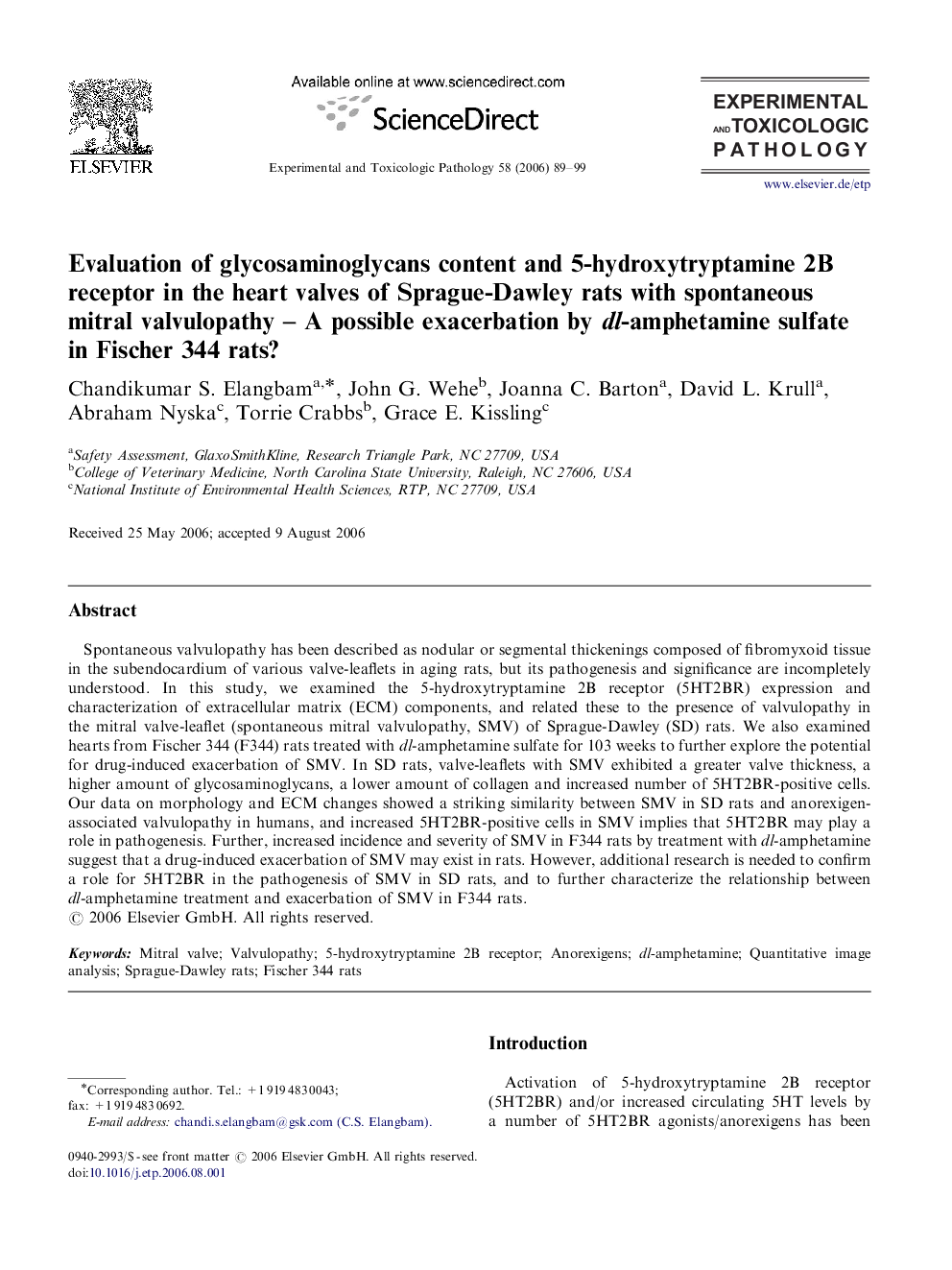| Article ID | Journal | Published Year | Pages | File Type |
|---|---|---|---|---|
| 2499368 | Experimental and Toxicologic Pathology | 2006 | 11 Pages |
Spontaneous valvulopathy has been described as nodular or segmental thickenings composed of fibromyxoid tissue in the subendocardium of various valve-leaflets in aging rats, but its pathogenesis and significance are incompletely understood. In this study, we examined the 5-hydroxytryptamine 2B receptor (5HT2BR) expression and characterization of extracellular matrix (ECM) components, and related these to the presence of valvulopathy in the mitral valve-leaflet (spontaneous mitral valvulopathy, SMV) of Sprague-Dawley (SD) rats. We also examined hearts from Fischer 344 (F344) rats treated with dl-amphetamine sulfate for 103 weeks to further explore the potential for drug-induced exacerbation of SMV. In SD rats, valve-leaflets with SMV exhibited a greater valve thickness, a higher amount of glycosaminoglycans, a lower amount of collagen and increased number of 5HT2BR-positive cells. Our data on morphology and ECM changes showed a striking similarity between SMV in SD rats and anorexigen-associated valvulopathy in humans, and increased 5HT2BR-positive cells in SMV implies that 5HT2BR may play a role in pathogenesis. Further, increased incidence and severity of SMV in F344 rats by treatment with dl-amphetamine suggest that a drug-induced exacerbation of SMV may exist in rats. However, additional research is needed to confirm a role for 5HT2BR in the pathogenesis of SMV in SD rats, and to further characterize the relationship between dl-amphetamine treatment and exacerbation of SMV in F344 rats.
